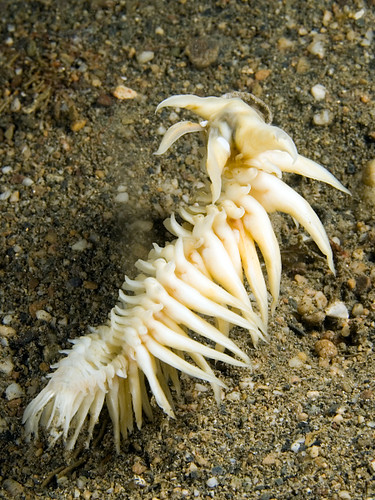Locatoin: North coast East Timor
Length: 6 inches
Depth: 12 m on sandy bottom
This critter was found hanging on to the top of a tube anemone tube. Anyone know what it is ? It was giving me the heebeegeebees!

Length: 6 inches
Depth: 12 m on sandy bottom
This critter was found hanging on to the top of a tube anemone tube. Anyone know what it is ? It was giving me the heebeegeebees!





